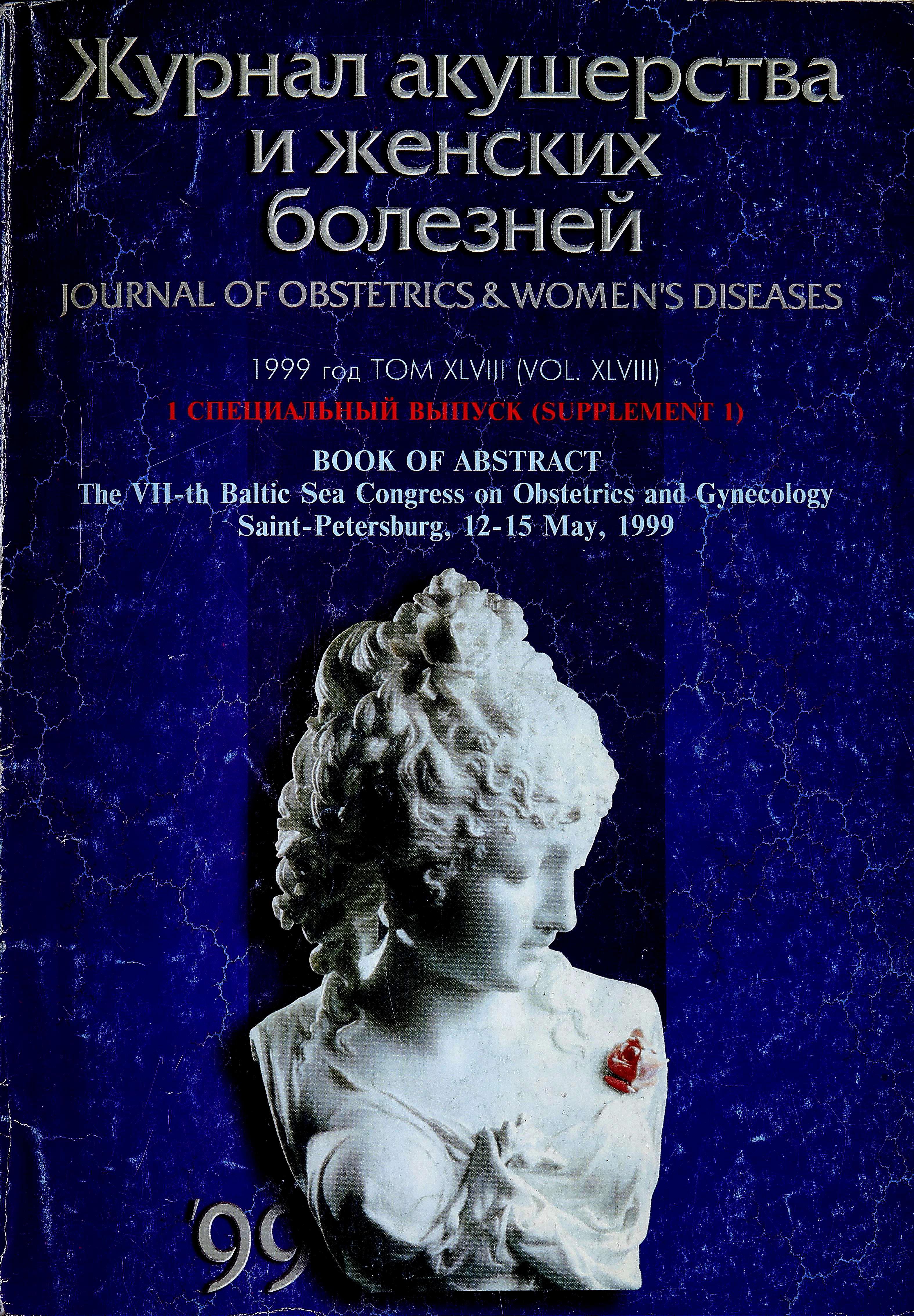Delivery at Danderyd Hospital - the current concept
- Authors: Gross-Witkow D.1, Nyman M.1
-
Affiliations:
- Karolinska Institutet Danderyd Hospital
- Issue: Vol 48, No 5S (1999)
- Pages: 71-71
- Section: Articles
- Submitted: 16.02.2022
- Accepted: 16.02.2022
- Published: 15.12.1999
- URL: https://journals.eco-vector.com/jowd/article/view/100935
- DOI: https://doi.org/10.17816/JOWD100935
- ID: 100935
Cite item
Full Text
Abstract
The current perinatal mortality, 0.47%, at Danderyd Hospital, and the low perinatal and maternal mortality in Sweden, is mainly connected to the maternal health programme, that was introduced in the 1940s. Also, the improved health status of the mothers has had a great impact. Information to the mothers, surveillance of the pregnancies, and identification of high risk pregnancies, is important. Parental education nowadays plays an important role.
Keywords
Full Text
The current perinatal mortality, 0.47%, at Danderyd Hospital, and the low perinatal and maternal mortality in Sweden, is mainly connected to the maternal health programme, that was introduced in the 1940s. Also, the improved health status of the mothers has had a great impact. Information to the mothers, surveillance of the pregnancies, and identification of high risk pregnancies, is important. Parental education nowadays plays an important role.
In the mid-1960s, the fathers were allowed into the delivery room. Rooming in for the babies in day time was introduced in the 1970s, and “around the clock” rooming in became common around 1990. At that time the children’s ward was taken away. This means that the mother and the infant are kept together all the time, except if the child needs pediatric surveillance and treatment at the neonatal intensive care unit (NICU).
Approximately 1975, shaving of the mothers' pubic hair prior to parturition and disinfection with chlorine solution was abandoned. Around 1988, after careful investigation, it was decided unnecessary to have sterile conditions in normal delivery. Today, we have what we call “clean delivery” in all normal cases. Instruments are sterilized, however. When instrumental deliveries or big ruptures that need suturing occur, the patient goes into the operating theatre with usual sterile conditions.
During cesarean sections, the father is usually present throughout the whole procedure, unless the mother has general anesthesia (in which case the father usually is present until she is put to sleep), or if there is an extremely urgent emergency cesarean section.
Often the father stays with his family during the hospital period, at least if it is the first child.
Visits at the postpartum wards are allowed freely by the father and sisters and brothers, unless there is a period of epidemic, like influenza or RS-virus.
Mothers in Sweden are allowed to stay at home and care for their newborn baby for 18 months, of which 12 months are with “sick leave” salary. The period can be shared between the parents, and quite a few men take “baby leave” for part of the time. The father is allowed 10 days for “paternity leave” in connection with the delivery.
A video of upright position at parturition and a video of a scheduled cesarean section will be shown.
About the authors
D. Gross-Witkow
Karolinska Institutet Danderyd Hospital
Author for correspondence.
Email: info@eco-vector.com
Sweden, Danderyd
M. Nyman
Karolinska Institutet Danderyd Hospital
Email: info@eco-vector.com
Sweden, Danderyd
References
Supplementary files







